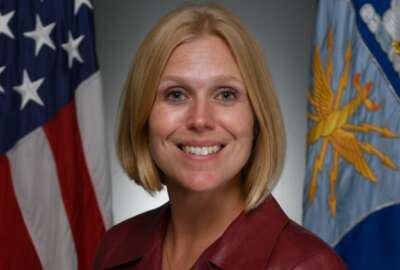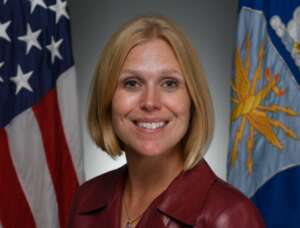

Lauren Knausenberger, the Air Force’s chief information officer, joined the service in 2017 starting at AFWERX before ascending to the CIO’s role for the last...
The Air Force makes it a trifecta of military services’ chief information officers heading out the door.
Lauren Knausenberger joined her counterparts at the Army and the Department of the Navy in deciding now was the right time to leave.

An Air Force spokesperson confirmed Knausenberger will be departing in June. She did not have a specific date of Knausenberger’s departure.
“The process to select the next CIO is expected to begin in early March with the goal to identify the new CIO before her departure,” the spokesperson said. “If no one is identified before she departs, we will have an acting CIO, but we’re still working out the details.”
Winston Beauchamp is the deputy CIO of the Air Force and would be a likely interim CIO should the service not find a permanent one by June.
Knausenberger’s decision comes just days after DoN CIO Aaron Weis announced he is leaving in March and just a two weeks after Army CIO Raj Iyer left his position.
The fact that all three military services’ CIOs left around the same time is both highly unusual, but not all that surprising.
All three have been in their positions for several years, ushered in major technology and business process changes and likely felt the time was right.
Knausenberger joined the Air Force as its CIO in August 2020 after spending the previous three years first as the director of cyberspace innovation and then as the chief transformation officer for the service.
She first came to the Air Force in 2017 as the director of Spark Tank for AFWERX.
During her tenure as CIO, Knausenberger helped lead the Air Force through several transformation initiatives, including the implementation of a new network architecture to improve remote and telework, testing and beginning to move toward a zero trust architecture, investing in Digital University, where more than 9,000 airmen are enrolled to gain the IT skillsets needed in a digital Air Force, and ruthlessly attacking manual processes and policies to remove anything in the way of going fast and costing money.
Part of that was a new automation strategy to help accelerate the implementation of tools like robotics process automation (RPA) for back office systems and for weapons systems like the Joint All-Domain Command and Control (JADC2) initiative.
She released an updated IT strategy through 2028 in August.
She further oversaw the continued development of the enterprise-IT-as-a-service (EITaaS) program, only to see it get hung up in protest purgatory. But while the protests get sorted out, the Air Force is looking at some of the underlying efforts that will support EITaaS, like the IT service management platform, workflow processes and enterprise license agreements.
One big initiative she just started working on is the consolidation of and better management of enterprise licenses for cloud and software as a services like ServiceNow, VMWare and Salesforce, for example.
Defense Scoop first reported Knausenberger’s decision to leave.
Copyright © 2025 Federal News Network. All rights reserved. This website is not intended for users located within the European Economic Area.
Jason Miller is executive editor of Federal News Network and directs news coverage on the people, policy and programs of the federal government.
Follow @jmillerWFED


